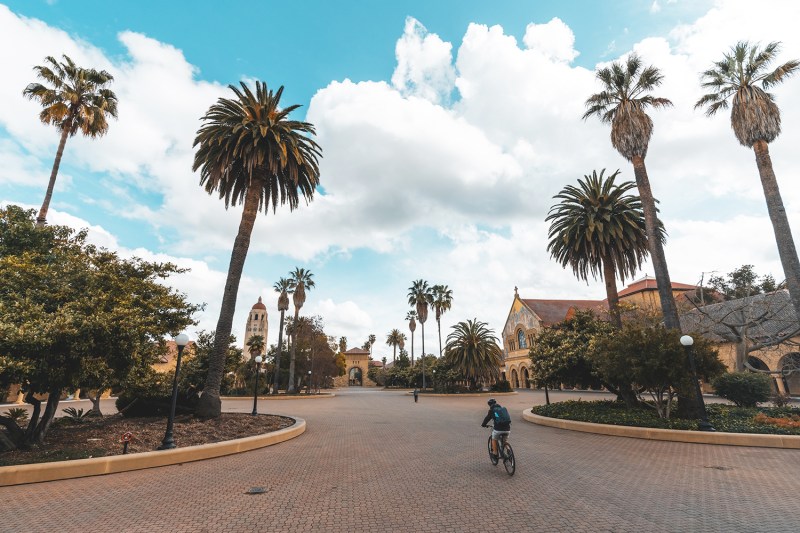When I began to grow my network beyond the racial homogeneity of rural Pennsylvania, someone asked me if I was Nigerian for the first time. Technically, I am. But not in that way. Every “just Black” person I’ve ever talked to has had a similar experience, where they want to express the fact that our ancestors were slaves without making everyone else in the conversation uncomfortable. So we settle on terms like “slave Black” or “Generational Black” or the more controversial “American Descendants of Slavery.”
When I got into Stanford, I was elated to finally have a larger community of Black students than what I dealt with growing up. Admittedly, I had this hyper-idealized perception of the Black community on campus. They were all exactly like me: slave descendants whose grandparents grew up in the South during Jim Crow.
Then, I quickly realized that I didn’t relate to the Black students on campus whose parents sacrificed everything in Kenya to give them a better life in the United States. And I didn’t relate to the Black students on campus who joined the Caribbean Students Association. In fact, I wanted to join NAIJA, Stanford’s Nigerian Students Association, based on the technicality that my 23andMe test told me I could, not because I knew if I was Igbo or Fulani. It was like I was playing Guess Who, and no one was left standing.
As a biracial person, I have little room to speak on this issue. Black students are already underrepresented on campus, and there seems to be a disproportionate amount of those seats filled by people like me who benefit from colorism. But it’s scary to look at statistics from years past and know that the proportion of Black students in each class is going down. Looking at the admissions cycle from 20 years ago, the Class of 2005 reported 12% of students as Black. Today, that number is only 9% for the Class of 2024. All the while, the amount and the diversity of Black students applying is going up.
Because of this, the success of a Black immigrant student feels like it’s taking away from a Generational Black student. It feels like we are competing for the same seat.
Colleges across the country are seeing Black immigrants overrepresented in the Black population on campus. Over 40% of Black students attending an Ivy League school come from an immigrant family, whereas first- and second-generation Black immigrants only make up 13% of the general Black U.S. population. At Harvard, this issue is especially pronounced, with the New York Times reporting that up to 66% of Black students come from African or Caribbean families. Because of this, Harvard students developed the Generational African American Students Association (GAASA) to create agency on campus.
One of the more shocking statements comes from Samantha O’Sullivan, co-founder and president of the GAASA: “If we were to count the number of [Generational African American] students at Harvard who were descended from enslaved people, came from low-income backgrounds, first-generation, four grandparents descended from enslaved people, I feel like that number would be so low — like, maybe one person.” Stanford may not disclose these demographics directly, but I would guess that it is likely similar to the trends here.
Once again, this rise in Black immigrant enrollment is a newer phenomenon happening in conjunction with the proportion of Black students going down at Stanford. Quite literally, elite institutions are squeezing out Generational Black students, with dark skin, low-income and first-generation students being hit the hardest.
But this manufactured competition leads to infighting, blaming other Black people for our lack of representation, which steers us away from the real problem of overall underrepresentation. My experience at Stanford has already been made better by the solidarity of Black immigrant students, and by no means are Black immigrants less deserving of the spots they’ve earned. Advocating for more Generational Black representation should not equate to scapegoating Black immigrants. When we talk about racial and ethnic equity at Stanford, other minorities are not the enemy. Even when we talk about affirmative action, other people of color are not the enemy.
Naturally, the next question is who upholds this inequality. According to a report conducted by Dr. Douglas Massey, a sociology professor at Princeton University, white admissions officers describe Black immigrants as “more polite, less hostile, more solicitous, and ‘easier to get along with’ … Native blacks are perceived in precisely the opposite fashion.” The same admissions officers who perpetuate this are still allowed to homogenize Black students when reporting that 8%. Racial hierarchy within educational institutions persists with Generational Black people at the bottom.
There are people in power in college admissions, people who benefit from maintaining legacy admits and donors, who want us to be so distracted by seeing other Black people as threats to our seat at the table, that we don’t ask for more seats. In response, we must move away from a one size fits all approach to Black enrollment. Admissions must work to increase underrepresented Black students at Stanford, clearly disclose the disparity of Black immigrant enrollment and slave ancestry enrollment, and evaluate if the progress we’ve made thus far is enough for any Black student on campus.
Contact Mikayla Tillery at mtillery ‘at’stanford.edu.
The Daily is committed to publishing a diversity of op-eds and letters to the editor. We’d love to hear your thoughts. Email letters to the editor to eic ‘at’ stanforddaily.com and op-ed submissions to opinions ‘at’ stanforddaily.com.
